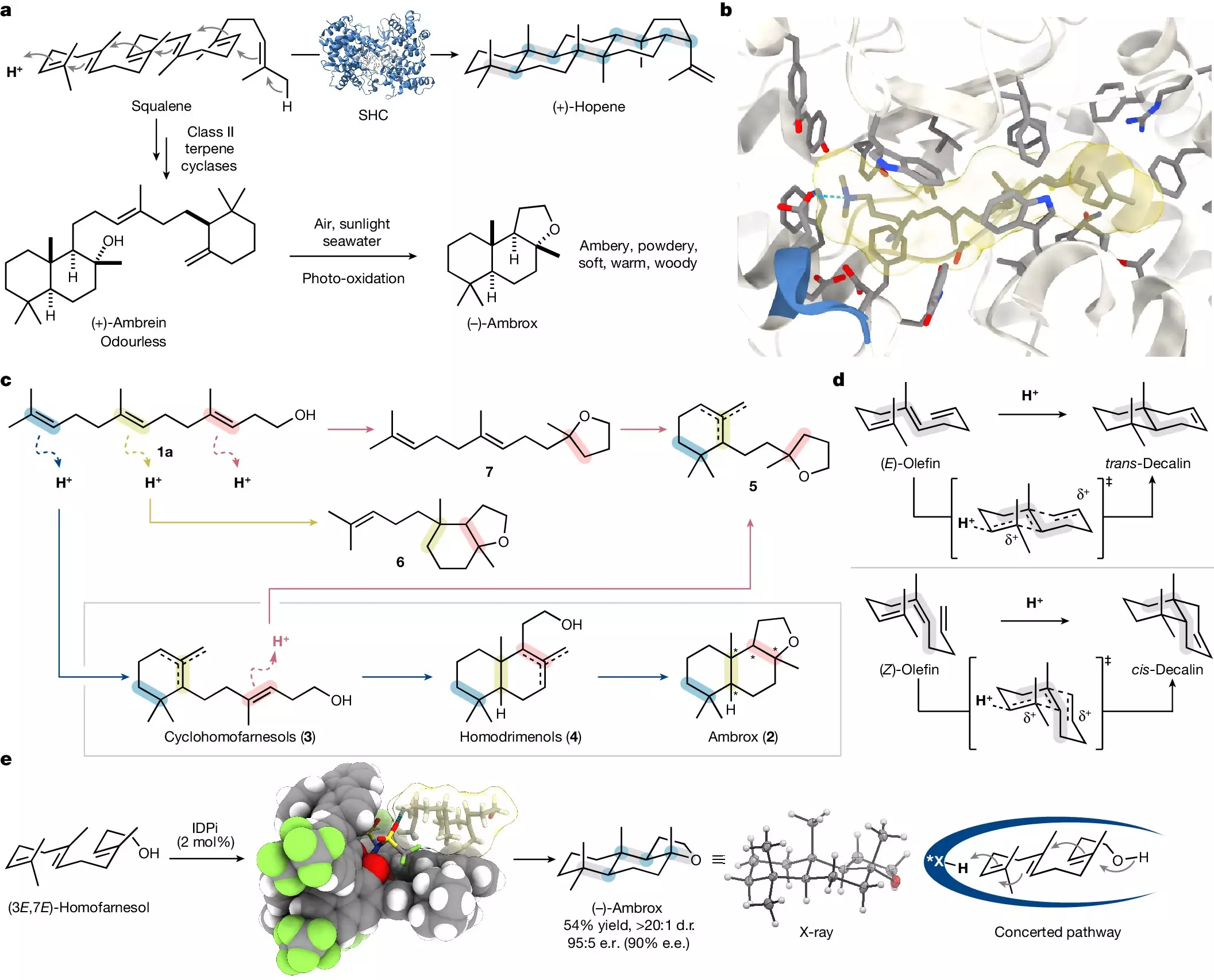The desire for delightful fragrances has driven humanity’s creative spirit since time immemorial. The meticulous art of perfumery, steeped in history, once relied heavily on rare natural substances to evoke sensory bliss. Among these, ambrox, a substance traditionally derived from ambergris—an organic material produced in the intestines of sperm whales—has been a staple in the fragrance industry. As demand surged, humanity’s quest for sustainable and efficient production methods became imperative, especially since traditional harvesting raised ethical concerns.
Historically, over 30 tons of ambrox were extracted annually from nature, though this practice presented challenges linked to environmental sustainability and ethical sourcing. Interestingly, only one of the sixteen molecular variations of ambrox yields the signature scent that perfumers cherish. This stereochemical complexity necessitates a carefully controlled synthesis process. Fortunately, contemporary research has unlocked alternative avenues for synthesis beyond whaling through innovative approaches in organic chemistry.
The breakthrough research team from the Max Planck Institute for Coal Research, under the guidance of Professor Benjamin List, has made significant strides in this arena. Their findings, published in the esteemed journal *Nature*, reveal a groundbreaking laboratory synthesis of (–)-ambrox that bypasses the need for whale-derived materials. By utilizing precursor compounds derived from plants, specifically clary sage—an herb known for its rich sclareol content—this synthesized method promises to change the landscape of fragrance production.
The researchers’ work is grounded in the intricate processes of polyene cyclization, a biological reaction facilitating the transition from simple molecular structures to elaborate compounds—all in a single step. Mathias Turberg, one of the doctoral students involved in the research, elucidates how closely the team drew inspiration from the natural world. The aim was not just to imitate nature but to capture its selectivity and efficiency through chemical innovation.
In this challenging endeavor, lead author Dr. Na Luo highlights the balance of complexity and simplicity in their approach. The use of the C15 building block nerolidol was crucial, as it provided a renewable foundation for constructing the more complex C16 molecule, homofarnesol. In collaboration with BASF, the team transformed nerolidol into homofarnesol via catalytic processes. This collaboration underscores the importance of partnerships between academic research and industrial capabilities, heralding a new era for sustainable chemical production.
One of the remarkable aspects of the List laboratory’s method is its ability to produce (–)-ambrox with unprecedented efficiency—transitioning from raw materials to product within just a few hours under mild conditions. Traditional methods required lengthy biocatalytic processes spanning three to four days, showcasing the ingenuity and sophistication of the new single-step synthesis. The use of confined catalysts and specialized fluorinated solvents plays a pivotal role in this reaction, pre-organizing materials and stabilizing transitional phases, which elevates both the speed and selectivity of the final product.
The sustainability of this method extends beyond immediate production capabilities. By allowing for catalyst recovery and reuse, the researchers position their technique as not only efficient but also environmentally responsible, thereby paving the way for future commercialization in the fragrance industry.
The implications of this discovery reach far beyond the world of perfume. As this advanced synthetic pathway exemplifies, the blending of natural chemistry with human ingenuity can lead to revolutionary breakthroughs with the potential to reshape industries wholly dependent on traditional practices. While ethical, sustainable sourcing of materials has become paramount, the capacity to mimic nature through laboratory methods represents a positive trajectory for both science and industry.
The synthesis of (–)-ambrox heralds a new chapter in perfumery, demonstrating the profound impact that interdisciplinary research can have in addressing societal challenges. With these advancements, the promise of creating captivating fragrances without compromising ethical or environmental standards stands as a testament to the power of perseverance in scientific inquiry.


Leave a Reply